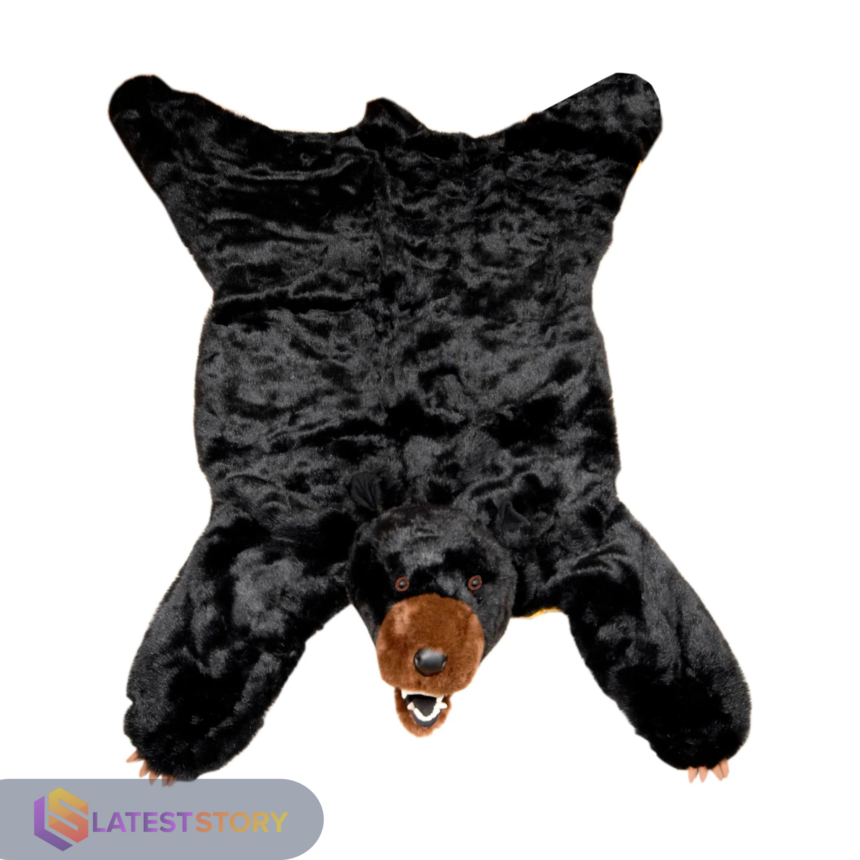Bear rugs have been a symbol of warmth, luxury, and rustic charm for centuries. Whether you’re looking to add a bold statement piece to your home or simply interested in their history, this guide will walk you through everything you need to know about bear rugs, including their types, care, and ethical considerations.
A Brief History of Bear Rugs
Bear rugs have been used for centuries as a functional and decorative item. Historically, they were a sign of status, often found in royal palaces, hunting lodges, and rustic cabins. Early settlers and Native American tribes used bear hides for warmth, shelter, and trade. Today, they remain popular as home decor pieces that add an element of wilderness and adventure to any room.
Why Choose a Bear Rug?
1. Unique Aesthetic Appeal
Bear rugs are timeless and versatile. They can be used as a centerpiece for a living room, draped over furniture, or even hung on walls to create a rustic atmosphere.
2. Unmatched Comfort
The thick fur of a bear rug provides exceptional warmth and softness, making it an excellent choice for cozy spaces like cabins and lodges.
3. A Collector’s Item
Some bear rug are treated as valuable collector’s items, especially vintage or rare pieces.
Bio Table
| Feature | Details |
|---|---|
| Material | Real Bear Fur / Faux Fur |
| Sizes | Small to Extra Large |
| Colors | Black, Brown, White |
| Usage | Indoor Decor, Collector’s Item |
| Maintenance | Spot Cleaning, No Direct Sunlight |
| Price Range | $50 – $10,000+ |
| Alternatives | Faux Bear Rugs, Synthetic Rugs |
Types of Bear Rugs
There are several types of bear rugs available, each with its unique appeal and characteristics.
1. Real Bear Rugs
These are made from authentic bear hides, usually sourced from legal and ethical hunting. They are durable, luxurious, and hold high value.
2. Faux Bear Rugs
For those who love the look but prefer an animal-friendly option, faux bear rug are a great alternative. Made from synthetic materials, they offer similar aesthetics without the ethical concerns.
3. Taxidermy Bear Rugs
These rugs include the preserved head and claws of a bear, making them a statement piece for collectors and hunters.

Ethical Considerations of Bear Rugs

Ethical Considerations of Bear Rugs
When purchasing a bear rug, it’s crucial to consider the ethical aspects:
- Sustainability: Ensure that the rug is sourced from legal and sustainable practices.
- Animal Rights: Many people prefer faux bear rug to support animal welfare.
- Legality: Some countries have restrictions on importing/exporting real bear rug
How to Choose the Perfect Bear Rug
How to Choose the Perfect Bear Rug
1. Material
Decide between real and faux bear rugs based on your preferences and ethical stance.
2. Size and Shape
Bear rugs come in various sizes. Choose a size that fits your space without overwhelming the room.
3. Color and Texture
Bear rugs vary in color (black, brown, white) and texture. Consider your existing decor when selecting a shade.
4. Budget
- Real bear rug can be quite expensive, especially if they are from rare species.
- Faux bear rug are more affordable and easier to maintain.
Caring for Your Bear Rug
To keep your bear rug in top condition, follow these essential care tips:
- Regular Vacuuming: Use a handheld vacuum to remove dust and debris.
- Spot Cleaning: For spills, use a damp cloth and mild detergent.
- Avoid Direct Sunlight: Prolonged exposure can cause fading.
- Store Properly: If not in use, store in a cool, dry place.
Decor Ideas Using Bear Rugs
Bear rugs can enhance any space when used creatively:
- Rustic Living Rooms: Place it in front of a fireplace for a cozy ambiance.
- Cabin Bedrooms: Drape it over the foot of the bed for a luxurious touch.
- Man Caves: Use it as a floor piece to create a bold statement.

FAQs

FAQs
1. Are bear rugs legal?
Yes, but it depends on the country and state laws. Always check local regulations before purchasing.
2. How can I tell if a bear rug is real?
Real bear rugs have a distinct fur texture and may include preserved features like claws and facial details.
3. How much does a real bear rug cost?
Prices range from $1,000 to $10,000, depending on size, species, and condition.
4. Can I wash a bear rug?
No, washing can damage the fur. Spot cleaning and professional care are recommended.
5. Are faux bear rugs a good alternative?
Yes! Faux bear rugs are affordable, ethical, and easier to maintain.
6. Do bear rugs attract pests?
If not properly stored or maintained, bear rug can attract moths. Use moth repellents and store in a dry place.
7. Can I use a bear rug outdoors?
Bear rug are best suited for indoor use. Exposure to weather conditions can damage the fur.
Conclusion
Bear rugs are a unique and timeless decor piece that adds warmth and character to any space. Whether you choose a real or faux bear rug, ensuring ethical sourcing and proper care will keep it looking beautiful for years to come. By considering the history, types, and maintenance, you can find the perfect bear rug that complements your home.






